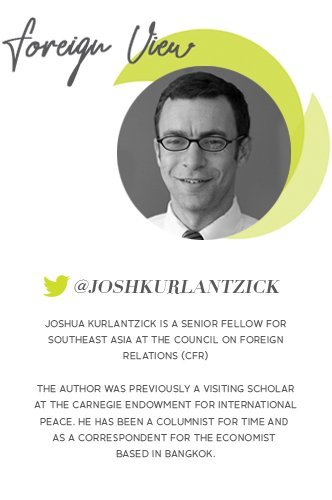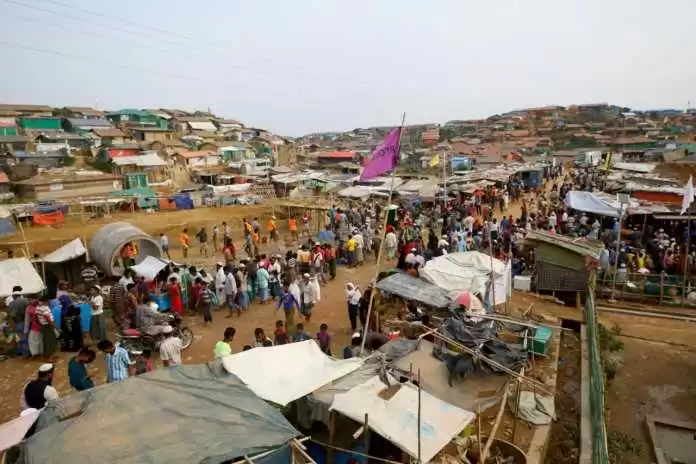 Earlier this month, the Myanmar government embarked upon a new plan to begin repatriating Rohingya who had fled Rakhine State after waves of brutal violence there. It was the second time Naypyidaw tried to begin the repatriation process—the first attempt was in November—and this time the Myanmar government reportedly had approved some three thousand Rohingya to return, with the backing of Bangladesh for this action. None apparently voluntarily took up the offer, instead fleeing back to the camps in Bangladesh or hiding out.
Earlier this month, the Myanmar government embarked upon a new plan to begin repatriating Rohingya who had fled Rakhine State after waves of brutal violence there. It was the second time Naypyidaw tried to begin the repatriation process—the first attempt was in November—and this time the Myanmar government reportedly had approved some three thousand Rohingya to return, with the backing of Bangladesh for this action. None apparently voluntarily took up the offer, instead fleeing back to the camps in Bangladesh or hiding out.
That Rohingya would not want to return to Myanmar is hardly surprising. It has been only two years since the deadliest wave of violence against them in Rakhine State. Rakhine State, where most Rohingya in Myanmar live, remains a violent and unstable place.
In recent months, violence in Rakhine State has been rising again, as the army battles the ethnic Rakhine Arakan Army. The military has resorted to its usual scorched earth tactics in response, and the UN’s human rights office has accused the Tatmadaw of launching attacks against civilians in this fighting. Amnesty International has further issued a report claiming that the Myanmar military is committing new atrocities in Rakhine State, against both ethnic Rakhine and Rohingya—including extrajudicial executions.
Meanwhile, the Myanmar government, while telling Rohingya that they can come back safely, has not exactly created a safe, trustworthy environment for their return. The ongoing violence in Rakhine State certainly does not indicate a strong prospect for safe return. Senior Myanmar government leaders continue to demonize the Rohingya and also refer to those still in Myanmar as illegals. A report released this week by Fortify Rights, a human rights and investigative group closely monitoring the situation for Rohingya, found that Myanmar authorities have continued to force Rohingya still living in Myanmar to accept National Verification Cards, which basically mark them as foreigners and preclude their getting citizenship rights. And the Myanmar and Bangladesh authorities did not appear to consult with Rohingya who were put on a list for repatriation, or prepare anywhere for them to restore their lives in Myanmar. The UN fact-finding mission found that the Myanmar government has simply leveled portions of northern Rakhine State where Rohingya had lived. Naypyidaw has done little to rebuild to prepare for a return, or offer infrastructure or social services of any kind in northern Rakhine State.
Instead, Myanmar companies are developing tracts of land formerly occupied by Rohingya. A UN fact-finding report released in early August found that the Tatmadaw’s “crony companies” are funding projects in Rakhine State now designed to reengineer the province’s ethnic makeup and “erase evidence of Rohingya belonging to Myanmar.”
Instead, the more than one million Rohingya in Bangladesh may try to stay in Bangladesh indefinitely, a scenario that is becoming increasingly plausible—though as Bertil Lintner notes, the Bangladesh government desperately does not want them to remain. Already, the camp on the Myanmar-Bangladesh border is the largest refugee camp in the world, overflowing with people, crowded, and highly vulnerable to disease and human trafficking. As Lintner notes, Bangladeshi citizens are growing increasingly resentful of the refugees and worried that they might take locals’ jobs, the camp’s massive size is causing environmental damage, and there are real fears that, the longer so many Rohingya stay as refugees in desperate conditions in Bangladesh, they could become targets for radicalization by extremist groups. Yet given the abysmal prospects for Rohingya if they returned to Myanmar, he is probably correct to note that the Rohingya are “there to stay” in Bangladesh, at least for a long time.
If this is the reality, what can Bangladesh, and other governments and aid agencies do about it? For one, while continuing to prepare for the (remote) possibility that Rohingya would be safely repatriated to Myanmar, the UN and other third party actors could push harder for a third country settlement solution for at least some Rohingya. There is at least some precedent for this option—Bhutanese refugees in Nepal have almost all been resettled in third countries—although it will obviously be difficult in the current global environment of large refugee flows and leaders increasingly opposed to taking in refugees. Still, there are third countries, in the region and globally, where more Rohingya resettlement might be possible in at least modest numbers, including Malaysia, Indonesia, and Canada. Yet the likelihood is that the Rohingya are going to remain in Bangladesh, and both the Bangladesh government and outside actors need to prepare for that possibility.
This article was originally published by the Council on Foreign Relations and can be accessed at cfr.org



